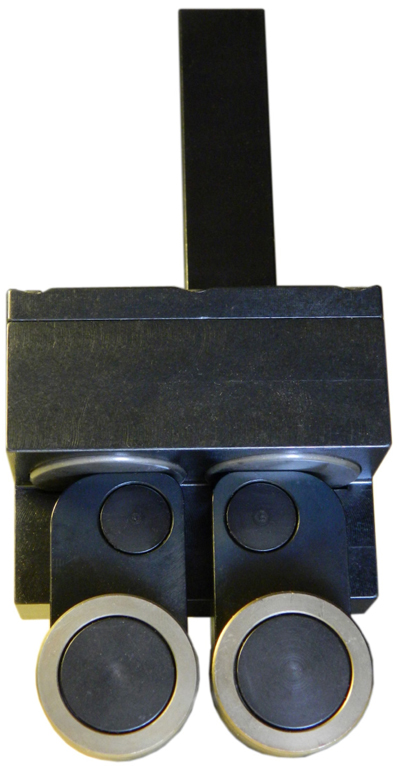EZ-PULLER Bar Puller
EZ-PULLER Bar Puller
Accudyne Corp. is introducing the EZ-PULLER. This self-adjusting bar puller is used in CNC turning centers to provide automatic operation of the machine.

Accudyne Corp. is introducing the EZ-PULLER. This self-adjusting bar puller is used in CNC turning centers to provide automatic operation of the machine.
The design of the EZ-PULLER allows the programmer or setup person to change bar sizes in the machine without having to manually adjust the tool. The tool functions by means of polyurethane springs that provide force to pivoting arms. These arms in turn apply force to circular grippers at the end of the arms. The grippers rotate only under extreme load and have a unique serration geometry that is said to generate minimal stock penetration while providing maximum grip for a more accurate pull.
To set the tool for gripping and pulling bar stock, the" tool is moved in the "Z" axis until the grippers are at least .180" past the end of the stock, then moved in the "X" axis until the grippers are on centerline with the material being pulled. A standard pull cycle is then initiated.
The EZ-PULLER can accommodate the following bar stock sizes:
Round Stock .125" to 1.625"
Hexagonal Stock .125" to 1.375"
Square Stock .125" to 1.000"





